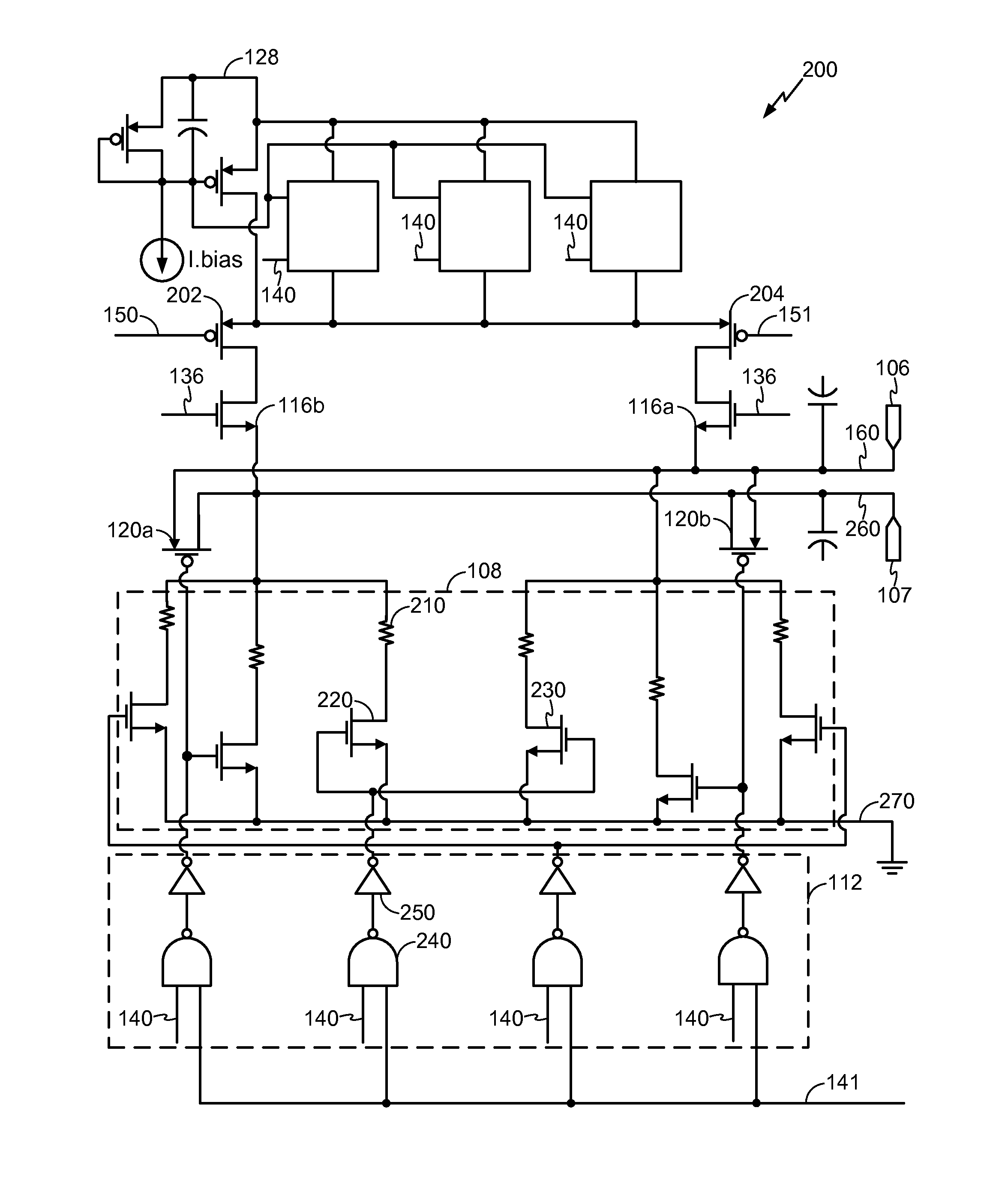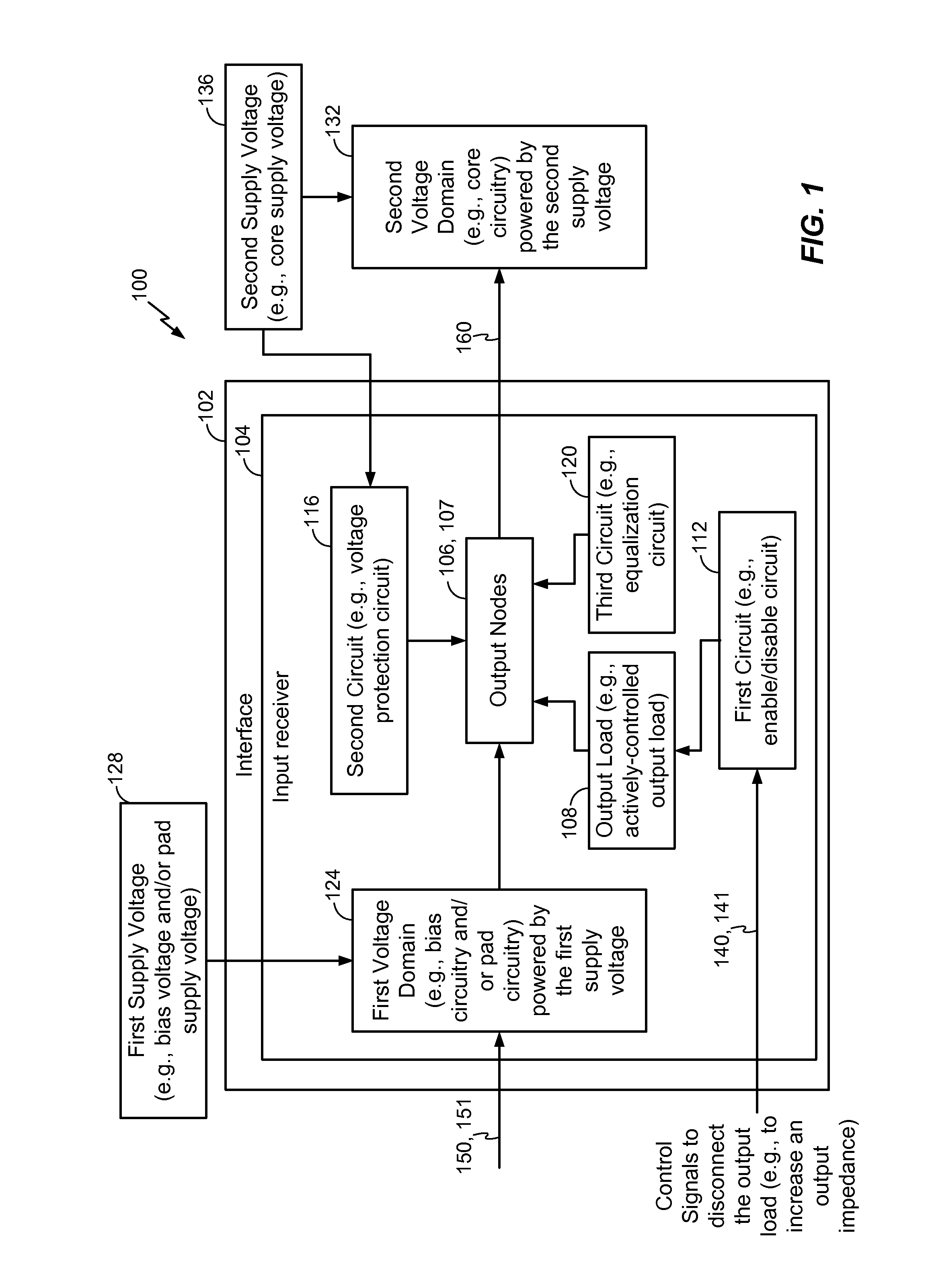Low-power interface and method of operation
a low-power interface and low-power technology, applied in the field of electronic devices, can solve the problems of slow mobile device performance, low power consumption, and difficulty in achieving both fast operation of the processor and low-power operation of the high-speed interface, and achieve the effects of fast processor operation, low latency, and fast performan
- Summary
- Abstract
- Description
- Claims
- Application Information
AI Technical Summary
Benefits of technology
Problems solved by technology
Method used
Image
Examples
Embodiment Construction
[0017]Referring to FIG. 1, a particular illustrative embodiment of a device is depicted and generally designated 100. The device 100 includes an interface 102. The interface 102 includes an input receiver 104. The input receiver 104 includes an output load 108, a first output node 106, and a second output node 107. The first output node 106 is configured to generate a first output voltage 160. In a particular embodiment, the output nodes 106, 107 correspond to a differential pair of output nodes configured to generate differential output voltages.
[0018]The device 100 further includes a first circuit 112 (e.g., an enable / disable circuit configured to enable / disable the output load 108), a second circuit 116 (e.g., a voltage protection circuit to restrict the first output voltage 160 from reaching or exceeding a threshold), and a third circuit 120 (e.g., an equalization circuit configured to equalize at least the first output voltage 160 when the output load 108 is disconnected). The ...
PUM
 Login to View More
Login to View More Abstract
Description
Claims
Application Information
 Login to View More
Login to View More - R&D
- Intellectual Property
- Life Sciences
- Materials
- Tech Scout
- Unparalleled Data Quality
- Higher Quality Content
- 60% Fewer Hallucinations
Browse by: Latest US Patents, China's latest patents, Technical Efficacy Thesaurus, Application Domain, Technology Topic, Popular Technical Reports.
© 2025 PatSnap. All rights reserved.Legal|Privacy policy|Modern Slavery Act Transparency Statement|Sitemap|About US| Contact US: help@patsnap.com



